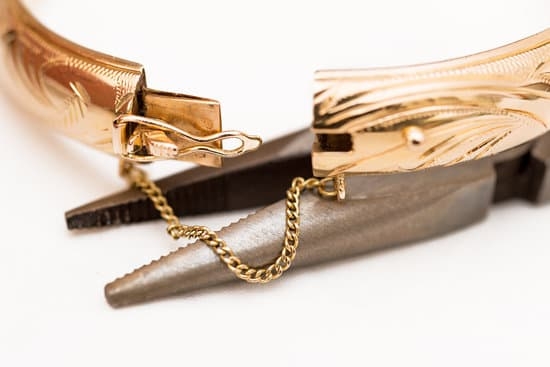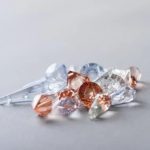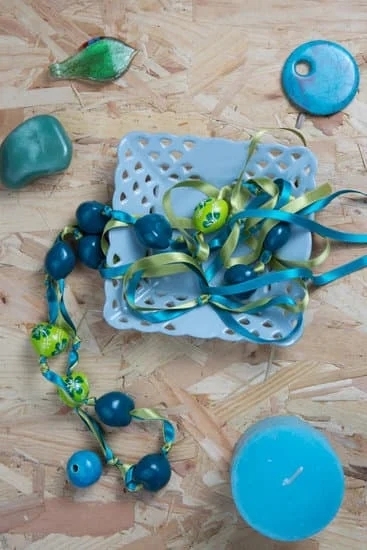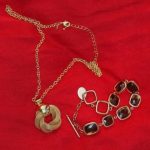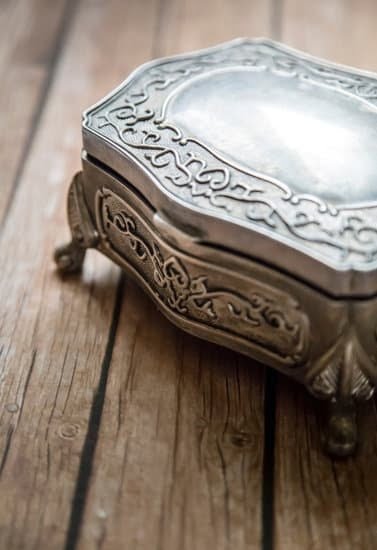Jewelry has always been an integral part of human expression, serving as a reflection of culture, history, and personal taste. Over the centuries, various styles and trends have emerged, each with its own unique characteristics and influences. One such iconic period in jewelry design is Art Deco, known for its geometric shapes, bold colors, and clean lines. However, what came after this remarkable era?
What style of jewelry took center stage in the years that followed? In this article, we delve into the evolution of jewelry styles beyond Art Deco, unraveling the transition to Retro Modern and exploring other noteworthy contenders like Art Nouveau. Prepare to embark on a fascinating journey through time as we explore the diverse world of post-Art Deco jewelry.
The Art Deco period, spanning from the 1920s to the 1930s, captivated enthusiasts with its cutting-edge designs and innovative use of materials. Characterized by sleek lines, stylized motifs, and symmetrical patterns inspired by industrialization and ancient civilizations, Art Deco jewelry reflected the rapidly changing world and societal shifts. With its emphasis on luxury and sophistication, it quickly became a symbol of opulence and modernity.
Now arises the question: what came next? The fascination surrounding this pivotal moment in jewelry design leaves many intrigued about the successor that would eventually emerge.
As we dive into the realm beyond Art Deco jewelry styles, one cannot ignore the Transitional period that marked a shift towards Retro Modern design. The end of World War II brought forth societal changes that influenced artistic expression in jewelry. From shifting notions of femininity to economic recovery efforts championed by technological advancements – these influences paved the way for a new aesthetic language in adornment.
This era witnessed a return to curvilinear designs inspired by nature motifs while embracing bold materials such as gold, platinum and gemstones playfully arranged into whimsical compositions. Retro Modern jewelry emerged as a response to the shifting tides of the post-war era, intertwining contemporary taste with nostalgic charm.
As we journey beyond Art Deco, we will explore the emergence of other notable contenders like Art Nouveau and Mid-Century Modern styles in subsequent sections. Through each period, it becomes evident that jewelry design is a reflection of societal influences, cultural shifts, and individual expression – forever evolving yet eternally captivating. Join us as we embark on this exploration of post-Art Deco jewelry, encompassing a range of styles that continue to shape our adornment choices today.
Understanding the Art Deco Era
The Art Deco era of jewelry design was a time marked by distinct characteristics and influential factors. With its origins in the 1920s and 1930s, the Art Deco period showcased designs that were bold, geometric, and elegant. Clean lines, sharp angles, and symmetrical patterns were hallmarks of this style.
One of the key influences on Art Deco jewelry design was the rise of industrialization. The streamlined aesthetic of machines and technological advancements inspired artisans to incorporate elements such as gears, bolts, and angular shapes into their pieces. This fusion of art and industry created a unique visual language that perfectly captured the spirit of the time.
Ancient civilizations also played a significant role in shaping Art Deco jewelry. The discovery of King Tutankhamun’s tomb in 1922 sparked a renewed interest in Egyptian art and symbolism. Jewelry designers began incorporating motifs like scarabs, sphinxes, and hieroglyphs into their pieces. Other ancient cultures such as Mayan, Aztec, and Indian also influenced Art Deco design with their intricate patterns and vibrant color palettes.
Furthermore, societal shifts during this period had an impact on jewelry aesthetics. As women gained more independence and embraced new freedoms, their fashion choices also evolved. Shorter hemlines allowed for more visible accessories, leading to an emphasis on statement-making jewelry pieces to complement the changing fashion trends.
Overall, understanding the characteristics and influences of the Art Deco era is crucial in recognizing its significance as a transitional period in jewelry design history. The combination of industrialization inspirations, ancient civilizations’ influence, and societal shifts resulted in a visually striking style that still captivates collectors today.
The Transition
During the mid-20th century, a transition in jewelry design took place as the Art Deco period came to an end. This marked the emergence of a new style known as Retro Modern. The shift in societal trends and the aftermath of World War II played significant roles in influencing this change in jewelry aesthetics.
Shifting Societal Trends
As the world recovered from World War II and entered a period of rebuilding, there was a noticeable shift in societal attitudes and values. The focus on progress and industrialization that characterized the Art Deco era began to give way to a longing for familiarity, comfort, and sentimentality. People sought solace and nostalgia as they were influenced by wartime experiences and sought stability in their lives.
This shift was reflected in the realm of jewelry design, where there was a turn toward softer, more feminine styles that incorporated organic shapes and symbols of love and nature. Curvilinear designs became popular once again, replacing the geometric forms prevalent during the Art Deco period. This return to more delicate aesthetics marked the beginning of the Retro Modern style.
Influence of World War II
The end of World War II brought significant changes to every aspect of society, including fashion and jewelry design. During the war years, many resources including precious metals and gemstones were redirected towards military efforts. As a result, there was a scarcity of these materials for civilian production.
In response to these limitations, designers became innovative by incorporating alternative materials such as base metals and synthetic gemstones into their creations. This experimentation not only gave rise to unique designs but also allowed for more affordable options for consumers.
Additionally, as soldiers returned home from war, there was a desire for joyous celebrations which led to an increased demand for elaborate jewelry pieces that captured the essence of timelessness and glamour. This desire for extravagance can be seen in the bold and playful use of materials like gold, platinum, and gemstones in Retro Modern jewelry designs.
Overall, the transition from Art Deco to Retro Modern jewelry was characterized by a shift in societal trends towards sentimentality and femininity. The end of World War II played a significant role in influencing this change by fostering a desire for familiar comforts and extravagant celebrations. The Retro Modern style embraced a return to curvilinear forms and the use of luxurious materials, setting the stage for new directions in jewelry design.
Retro Modern Jewelry
Retro Modern jewelry, also known as Retro or Mid-Century Modern jewelry, emerged as a distinct style after the Art Deco period. This style showcased a shift away from the clean lines and geometrical shapes of Art Deco towards more curvilinear and feminine designs. It embraced nature-inspired motifs and brought a sense of playfulness to jewelry aesthetics.
Key Elements:
- Curvilinear Designs: Retro Modern jewelry featured sweeping curves and soft lines that evoked a sense of femininity. The emphasis on organic, flowing shapes was in stark contrast to the angularity of Art Deco design.
- Playful Motifs: Nature themes played a significant role in Retro Modern jewelry. Popular motifs included flowers, leaves, birds, and butterflies, all conveyed with a touch of whimsy.
- Use of Materials: Retro Modern designers worked with precious metals like gold and platinum to create their pieces. They often used colorful gemstones such as amethysts, aquamarines, rubies, and sapphires to bring vibrancy to their designs.
- Boldness in Scale: Retro Modern jewelry embraced larger sizes and bolder proportions compared to the delicate nature of Art Deco pieces. Oversized cocktail rings, statement necklaces, and chunky bracelets became fashionable accessories.
Inspirations:
- Post-War Optimism: The end of World War II brought about an air of optimism and hope for the future. This newfound positivity was reflected in the playful and exuberant designs of Retro Modern jewelry.
- Hollywood Influence: Just as Art Deco jewelry was influenced by Hollywood’s Golden Age in the 1920s-1930s, Retro Modern jewelry drew inspiration from movie stars during its time. Actresses such as Marilyn Monroe, Elizabeth Taylor, and Audrey Hepburn popularized glamorous styles like statement necklaces, cocktail rings, and elaborate brooches.
- Mid-Century Design: Retro Modern jewelry was influenced by the aesthetic of the broader Mid-Century Modern design movement. The sleek and minimalist designs seen in architecture, furniture, and fashion during this era translated into jewelry with clean lines and sculptural shapes.
Retro Modern jewelry remains a beloved style today for those seeking a nostalgic yet contemporary look. Its fusion of feminine curves, nature motifs, and boldness in scale continue to captivate jewelry enthusiasts who appreciate its unique charm.
Hollywood Glamour
During the Retro Modern era, the influence of Hollywood on jewelry trends and consumer preferences cannot be overstated. Famous actresses such as Marilyn Monroe, Elizabeth Taylor, and Audrey Hepburn became style icons whose jewelry choices were eagerly emulated by fans worldwide. These glamorous movie stars showcased stunning pieces of Retro Modern jewelry that embodied the spirit of the time.
One of the most notable influences of Hollywood on Retro Modern jewelry was the emphasis on opulence and luxury. Actresses like Elizabeth Taylor became known for their extravagant collections, which featured elaborate necklaces, statement earrings, and dazzling cocktail rings. These pieces were often adorned with large gemstones like diamonds, sapphires, rubies, and emeralds, creating a sense of grandeur and sophistication.
Additionally, movie stars played a significant role in popularizing specific motifs and designs during the Retro Modern period. Marilyn Monroe’s iconic performance in “Gentlemen Prefer Blondes” showcased her wearing a mesmerizing diamond necklace featuring a descending line of diamonds (commonly referred to as a “riviere necklace”). This piece sparked a trend for necklaces with cascading diamond or gemstone accents – a design element that epitomized elegance and Hollywood glamour.
Audrey Hepburn’s legendary portrayal of Holly Golightly in “Breakfast at Tiffany’s” created another influential jewelry trend. Hepburn’s character is forever associated with the image of her wearing a striking multi-strand pearl necklace with an elaborate brooch that delicately hangs from it. This iconic combination of pearls and brooches became synonymous with chic femininity and remains an enduring symbol of classic style.
Overall, the influence of movie stars during the Retro Modern era extended beyond their performances on-screen. Their jewelry choices reflected societal aspirations for elegance, luxury, and fantasy. By showcasing lavish pieces that exuded glamour and embracing certain motifs in their personal style both off-screen and on-screen, these actresses left an indelible mark on the jewelry aesthetics of the time.
The Revival of Art Nouveau
Art Nouveau, another prominent contender for jewelry styles following the Art Deco period, experienced a revival in popularity during the mid-20th century. This movement, which first emerged in the late 19th century, was characterized by its emphasis on organic and flowing designs inspired by nature, femininity, and sensuality. In many ways, Art Nouveau represented a departure from the geometric and sleek aesthetics of Art Deco.
Organic and Flowing Designs
One of the defining features of Art Nouveau jewelry is its focus on curvilinear forms and intricate detailing. Jewelry designers during this period drew inspiration from a wide range of natural elements including flowers, plants, animals, and even human forms. The use of sinuous lines and delicate motifs created an ethereal and romantic quality that set it apart from the boldness of Art Deco.
Overlap with Retro Modern
Interestingly, there is some overlap between Art Nouveau and Retro Modern styles. While Retro Modern jewelry embraced more geometric shapes and clean lines reminiscent of its predecessor Art Deco, it also incorporated certain elements from the organic designs of Art Nouveau. This fusion created a unique aesthetic that resonated with post-war society’s desire for both nostalgia and modernity.
Influence on Contemporary Jewelry
The revival of interest in Art Nouveau during the mid-20th century continues to influence contemporary jewelry design today. Many artists draw inspiration from its graceful forms, intricate craftsmanship, and devotion to capturing the essence of nature. By incorporating these elements into their creations, contemporary jewelers pay homage to the rich history of jewelry design while infusing it with their own unique perspective.
Mid-Century Modern
The Mid-Century Modern period, which spanned from the 1940s to the 1960s, marked a transition between the Retro Modern style and contemporary jewelry. This era was heavily influenced by the modernist movement and embraced minimalist, sculptural designs. Mid-century modern jewelry was characterized by clean lines, geometric shapes, and a focus on functionality.
During this time, Scandinavian designers played a significant role in shaping Mid-Century Modern jewelry. Scandinavian jewelry was known for its simplicity, elegance, and use of high-quality materials. Designers like Vivianna Torun Bülow-Hübe and Björn Weckström created pieces that embodied these principles, often incorporating organic forms inspired by nature.
In America, influential jewelry designers like Georg Jensen and Harry Bertoia also contributed to the development of the Mid-Century Modern style. Jensen’s designs had a timeless quality with simple yet distinctive shapes. Bertoia experimented with metalwork techniques and created sculptural pieces that blurred the lines between art and jewelry.
The Mid-Century Modern period not only represented a shift in aesthetics but also reflected new societal values and cultural shifts. As technology advanced rapidly during this time, designers began to embrace innovative materials like plastics and industrial metals alongside traditional precious metals. This experimentation with materials opened up new possibilities for creative expression in jewelry design.
Overall, the Mid-Century Modern era served as a bridge between Retro Modern jewelry and contemporary styles. It laid the foundation for future developments in design by embracing simplicity, functionality, and innovation. Today, Mid-Century Modern-inspired pieces continue to be appreciated for their timeless appeal and influence on contemporary jewelry trends.
Contemporary Jewelry
The Art Deco period brought forth a revolutionary style of jewelry that dominated the design world in the early 20th century. However, as times changed and trends evolved, a new wave of jewelry styles emerged after Art Deco.
Contemporary jewelry is a vibrant and diverse category that encompasses various styles, materials, techniques, and influences. From minimalist designs to bohemian aesthetics, vintage-inspired pieces to avant-garde creations, contemporary jewelry offers a multitude of options for those seeking unique and personalized adornments.
One notable trend in contemporary jewelry is the rise of minimalist designs. Inspired by clean lines and simplicity, minimalist jewelry follows the “less is more” philosophy. These pieces often feature sleek shapes and delicate details, making them versatile for everyday wear or as subtle accents to more elaborate outfits. Materials such as sterling silver and rose gold are commonly used in minimalist jewelry to enhance the understated elegance.
On the other end of the spectrum, bohemian-inspired jewelry has gained popularity among those who embrace free-spirited and eclectic styles. Drawing inspiration from nature, culture, and spirituality, bohemian jewelry showcases an array of textures, colors, and embellishments. Natural materials like feathers, gemstones, leather, and wood are frequently incorporated into these designs. Layered necklaces with statement pendants or stackable bracelets with mixed textures are classic examples of bohemian-style accessories.
Vintage-inspired jewelry has also made a comeback in contemporary fashion trends. These pieces evoke nostalgia by capturing design elements from different historical eras. Vintage-inspired rings may feature intricate filigree work reminiscent of Victorian-era craftsmanship or bold cocktail rings that pay homage to the glamorous Art Deco period. The use of antique finishes and romantic motifs adds to their charm.
Lastly, avant-garde jewelry pushes boundaries with its unconventional materials and groundbreaking designs. It challenges traditional notions of what constitutes wearable art. Avant-garde pieces often incorporate non-traditional materials like discarded objects, recycled materials, or even unconventional ones like rubber or paper. From bold statement necklaces to experimental earrings, avant-garde jewelry defies expectations and provokes thought.
| Contemporary Jewelry Styles | Description |
|---|---|
| Minimalist | Characterized by clean lines and simplicity. Often made with materials such as sterling silver and rose gold. |
| Bohemian | Inspired by nature, culture, and spirituality. Features natural materials like feathers, gemstones, leather, and wood. |
| Vintage-inspired | Evoke nostalgia by capturing design elements from different historical eras. Utilize antique finishes and romantic motifs. |
| Avant-garde | Push boundaries with unconventional materials and groundbreaking designs. Often seen as wearable art. |
Conclusion
In conclusion, the evolution of jewelry styles has been a fascinating journey from the iconic Art Deco period to the multitude of styles seen in contemporary jewelry today. The transition from Art Deco to Retro Modern marked a shift in societal trends and aesthetics, as curvilinear and feminine designs took center stage once again. Retro Modern jewelry was heavily influenced by Hollywood glamour, with famous actresses like Marilyn Monroe and Audrey Hepburn shaping trends and consumer preferences.
However, it is important to note that other styles also emerged as contenders after the Art Deco era. Art Nouveau, with its organic and flowing designs inspired by nature, provided an alternative aesthetic choice for jewelry lovers. Additionally, the Mid-Century Modern style acted as a bridge between Retro Modern and contemporary jewelry, with minimalist and sculptural aspects coming into play.
The world of contemporary jewelry is a vast landscape filled with endless possibilities. From minimalist designs to bohemian influences, vintage-inspired pieces to avant-garde creations, there truly is something for everyone’s unique taste. The materials, techniques, and influences in contemporary jewelry are also incredibly diverse.
As we appreciate the ongoing evolution of jewelry styles, it is essential to embrace diversity and explore different aesthetics. There is no right or wrong style when it comes to personal expression through jewelry. So whether you prefer clean lines and geometric shapes reminiscent of Art Deco or are drawn to more organic and nature-inspired designs like Art Nouveau or Retro Modern, find your own unique style within this dazzling world of jewelry.
Frequently Asked Questions
What is the difference between Edwardian and Art Deco jewelry?
The difference between Edwardian and Art Deco jewelry lies primarily in their respective time periods and design aesthetics. Edwardian jewelry was popular between the years 1901 and 1910, during the reign of King Edward VII of England. It is characterized by a more delicate and feminine style, with intricate lace-like patterns, filigree work, and a focus on softer gemstones such as pearls and diamonds.
In contrast, Art Deco jewelry emerged in the 1920s and remained popular throughout the 1930s. Its design style is characterized by geometric shapes, clean lines, bold colors, and symmetrical patterns. Art Deco pieces often incorporate materials like platinum, white gold, and colored gemstones such as emeralds, sapphires, or rubies.
What is the difference between Art Nouveau and Art Deco Jewellery?
The main difference between Art Nouveau and Art Deco Jewellery lies in their inspirations and visual styles. Art Nouveau jewelry emerged in the late 19th century as a reaction against mass-produced goods during the Industrial Revolution. It draws inspiration from natural forms such as flowers, plants, insects, and flowing curvilinear lines.
The designs feature intricate details through techniques like enamelwork, repoussé (raised metalwork), and gemstone settings that enhance the organic aesthetic of each piece. Conversely, Art Deco Jewelry emerged in the early 20th century as a reflection of modernism and industrialization. It embraces geometric shapes like triangles, squares, circles with angular edges rather than the sinuous lines found in Art Nouveau designs.
What is Art Nouveau style jewelry?
Art Nouveau style jewelry evolved during a period spanning from around 1890 to 1910. This movement was deeply influenced by artistic developments that rejected historical revival styles prevalent in decorative arts at that time. Instead of deriving inspiration from earlier art movements or historical periods like Rococo or Gothic Revivalism; designers embraced nature’s sinuous curves to create their unique designs.
Art Nouveau jewelry often incorporated stylized forms of flowers, plants, birds, and insects, utilizing various techniques like enamelwork and carved gemstones that enhanced the organic aesthetics. The focus was on creating a harmonious blend of natural elegance with artistic craftsmanship, resulting in pieces that exuded delicacy and grace.

Welcome to my jewelry blog! My name is Sarah and I am the owner of this blog.
I love making jewelry and sharing my creations with others.
So whether you’re someone who loves wearing jewelry yourself or simply enjoys learning about it, be sure to check out my blog for insightful posts on everything related to this exciting topic!

